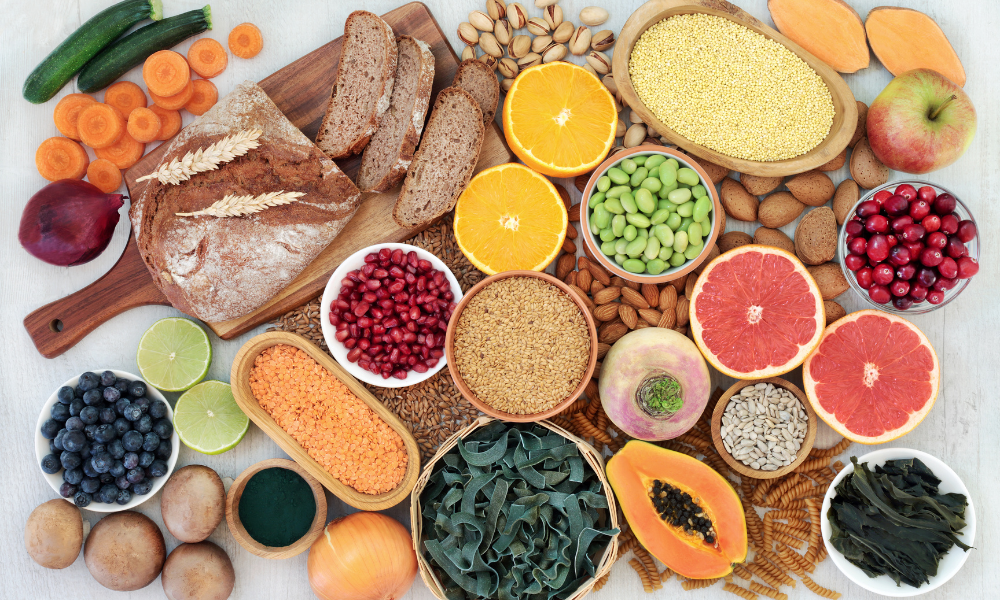Each fall and winter, many retailers and analysts publish smart forecasts about what we will eat and why, in the coming year.
We decided to run a friendly reality check: take a few of the headline predictions and compare them with what our always-on digital twin research panels are saying and doing.
Here is the first forecast we tested
“Protein continues to be king, but fiber is gaining traction as consumers seek gut health, holistic digestive wellness and natural ways to feel fuller longer. Brands are getting on board with more fiber-forward callouts on packaging, and increasingly, we’re seeing products with added fiber hitting the shelves, like pastas, breads, crackers and bars… Meanwhile, pantry staples like oats are the star of up-and-coming products… It’s safe to say these fiber finds are not just for your grandparents anymore!”
Source: Whole Foods
Why start here? Because fiber is having a cultural moment, and it touches product, pricing, and messaging all at once. The question is simple: do consumers behave the way the trend prediction implies, and what does that mean for your 2026 roadmap?
What our digital twins say
We asked 100 Canadian and 100 U.S. Digital Twins of real consumers: Are you planning to increase your fibre consumption in 2026?
-
•
United States: A large majority intend a modest, food-first fiber increase in 2026. They plan to do it with beans, lentils, oats, whole grains, frozen or seasonal vegetables, and small, low-effort swaps. They reject powders, bar-based “hacks,” and gram counting. They want satiety, steady energy, and gut comfort without turning meals into math.
-
•
See the full U.S. report here
-
•
-
•
Canada: Directionally similar, but with a higher baseline and less headroom. Many already eat fiber-rich diets and expect only a gentle nudge upward, shaped by seasonality, gardens or CSA boxes, flyer deals, and frozen vegetables. The same skepticism toward powders applies. Digestive comfort and perimenopause pacing show up often.
-
•
See the full Canadian report here.
-
•
So, does the forecast hold? Mostly yes on momentum and oats. The nuance: shoppers prefer everyday staples and habit design over visibly “added-fiber” products. They will accept higher-fiber breads, wraps, or pastas if taste and price hold, but the bias is clear—real food first.
Why does this matter now?
The growth vector is not controversial, it is practical: make familiar foods work harder without adding friction. In other words, the opportunity sits where consumers already spend time and money—beans, oats, soups, whole grains, freezer aisles, and batch-cook routines.
How should brand, comms, and innovation respond?
-
•
Product strategy:
Shift from big claims to quiet capability. Favor formats consumers already cook: ready-to-heat legumes and grain bases, bean-and-veg soups, and family-friendly wraps or breads with higher fiber and no texture penalty. Where fortification is used, keep it invisible to the palate. Offer servings-based cues rather than grams to match how people think about meals.
-
•
Price and access:
Anchor to value per serving and pantry longevity. In the U.S., call out under-two-dollars-per-serving, pantry- and freezer-friendliness. In Canada, align features with flyer cycles, garden or CSA season, and position frozen vegetables and bulk legumes as inflation shields.
-
•
Messaging and usability:
Lead with satiety, steady energy, and comfort. Offer simple pacing for runners and sensitive users. In multicultural segments, connect with legume-first traditions and rhythms like Ramadan or community meals that already nudge fiber up. Keep tone calm and specific, not breathless.
What does this mean for food brands today? Treat fiber as a behavior design challenge. Reduce cognitive load, respect texture and family acceptance, and meet the basket where it already lives.
Translate the signal into action
-
•
Assortment:
Launch two or three anchor SKUs that create obvious weeknight wins in fifteen to thirty minutes. Examples: a lentil-and-whole-grain base that turns into three meals, a freezer‑ready bean-and-veg soup kit, and a soft higher‑fiber wrap that passes a kid taste test. On-pack, use simple servings cues to help shoppers win without counting.
-
•
Retail and promo:
-
•
United States: Bundle with store-brand frozen vegetables and bulk oats. Tag endcaps with pantry math and, where applicable, WIC eligibility. Aim for clear value ladders at the shelf that connect to batch-cook habits.
-
•
Canada: Time features to flyer windows and winter porridge or soup season. In summer, pair with garden and CSA displays. Use bilingual shelf talkers that promise small, sustainable bumps rather than overhauls.
-
•
-
•
Content and customer success: Replace gram targets with tiny playbooks. One extra bean night each week. Oats two mornings. A bigger salad base at dinner. Offer bean prep de‑gas steps and gradual ramp plans. Provide pre‑event timing for athletes and a “dial down, then up” cadence for fasting households.
Decision frameworks you can use this quarter
-
•
Gate check for concepts: Does this deliver a servings‑based fiber win with no texture penalty in under thirty minutes? If not, revise.
-
•
Promo rule: Can we make a truthful under‑two‑dollars‑per‑serving claim in the U.S., or a clear CAD‑per‑serving claim aligned to flyer timing in Canada? If not, adjust pack size or partner SKU.
-
•
Message test: Replace “gut reset” language with “fuller longer” and “steady afternoon energy,” then measure click‑through and repeat versus control.
Clear takeaways
-
•
Brand: Build fiber into familiar formats and speak in servings, not grams. Price for pantry math. Protect texture.
-
•
Comms: Lead with satiety, energy, and everyday comfort. Offer simple pacing, not programs. Avoid supplement‑coded language.
-
•
Innovation: Design to the batch‑cook and freezer workflow. Add seasonal modules. Tie retail execution to WIC, flyers, and garden or CSA cycles by market.
What should we test next?
If this hit a nerve, forward it to someone in innovation. At 6 Seeds, we decode the behavior behind the buzz. Let’s talk about how this trend intersects with your next product brief.
Sources: U.S. and Canadian digital twin panels, October 2025.[1][2]

